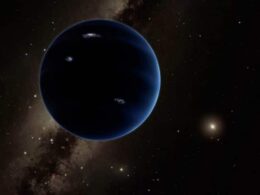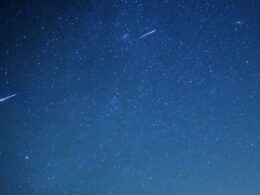All eyes have been on Comet Wirtanen during its relatively close flyby of Earth. But another lesser body in the Solar System has also been making one of its brightest and best shows, though you will still need binoculars to see it.
Juno, which was the third of the asteroids to be discovered, takes more than four and a third years to orbit the Sun, between the orbits of Mars and Jupiter.
Every year, the Earth catches up with it and overtakes it on the inside. At these times, Juno is at is closest and so brightest. But because Juno’s orbit is significantly elliptical, it comes closer to us on some occasions than on others.
Juno was last at opposition, and closest to Earth, on November 16th, 2018, at a distance of 154 million km (96 million miles) away, which is a similar distance as the Sun. It could be found in the constellation of Eridanus (the river), and shone at a magnitude of 7.4.
This was particularly bright. At other oppositions, Juno is more remote. In June 2017, for example, it got no brighter than 9.8. At its next opposition, in April 2020, it will get no brighter than 9.5. And in June 2011, it will only reach magnitude 10.1.
As 2018 draws to a close, Juno is fading but still bright as far as binocular objects go, at magnitude 8.0. It is also well placed for observers in the northern hemisphere, close to the border with Taurus which it enters in the first week of 2019.
Our chart shows its track from the end of December until late March, when Juno will have crossed into the constellation of Orion and have faded considerably to magnitude 9.7.
Unlike a comet, which reveals itself by its fuzzy head, or coma, and possibly its tail, asteroids show as starlike points of light and so are impossible to differentiate from stars unless you know just where to look. You will therefore need to use the chart, or a planetarium app on your computer, tablet or smartphone, to pick Juno out from the faint stars.
If you do spot Juno, you could make a sketch showing it in the starfield, and then repeat the exercise a few days later to see for yourself how it has moved. Or take photos with exposures of a few seconds which you can compare to see the asteroid’s motion. See our guide to photographing an asteroid in our report on Vesta’s close approach in 2018.
Juno, one of the two largest stony asteroids, was first spotted in 1804 by German astronomer Karl Harding, soon after the discoveries of Ceres and Vesta. Its full designation is 3 Juno. At the time these objects were all considered to be planets, but as more and more such discoveries were made, they were relegated to a new class of asteroid or minor planet.
Related: What to see in the sky this month



